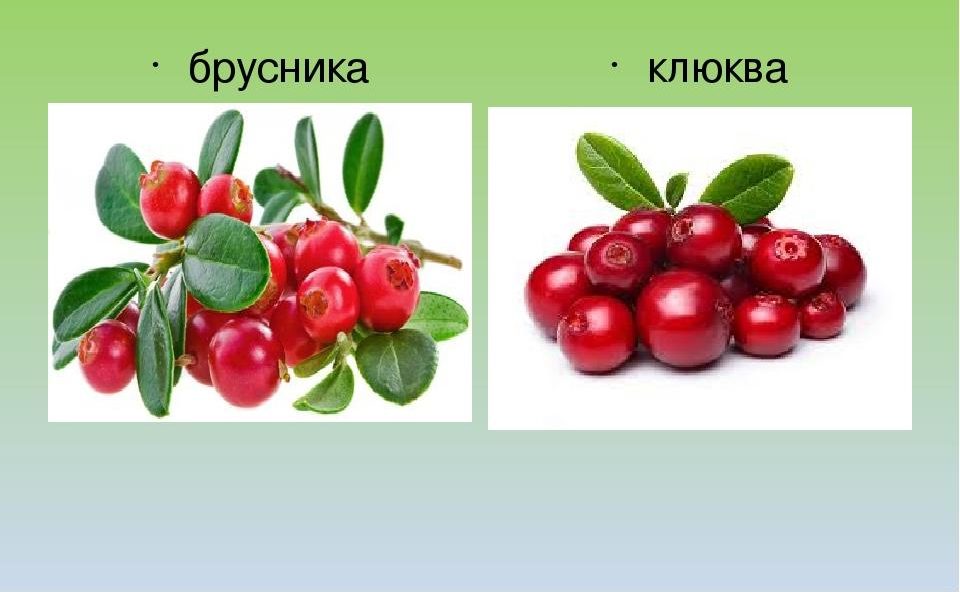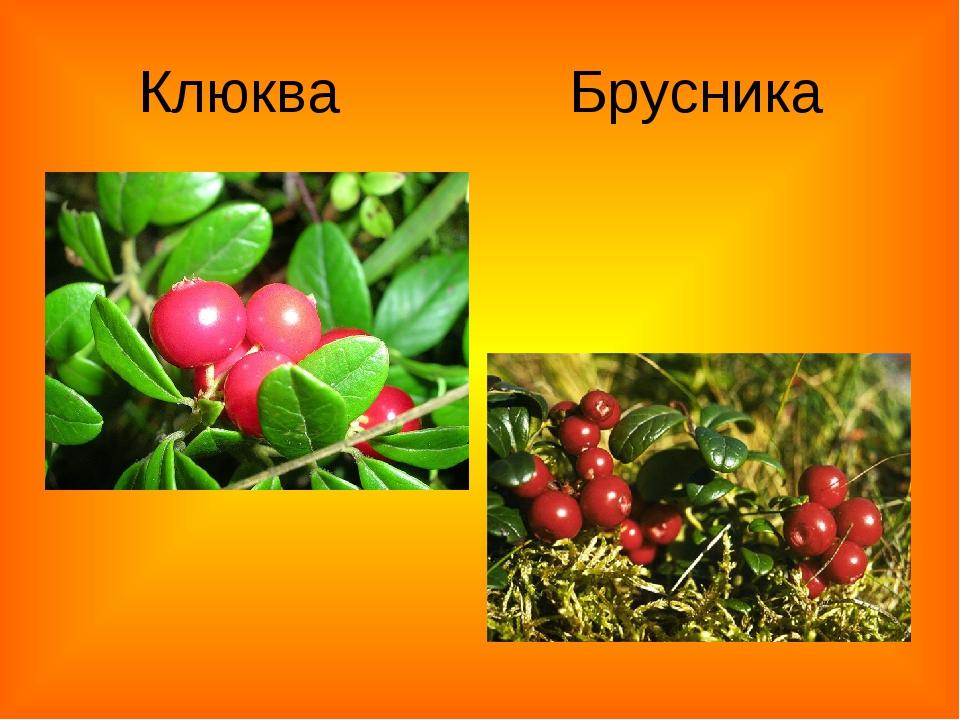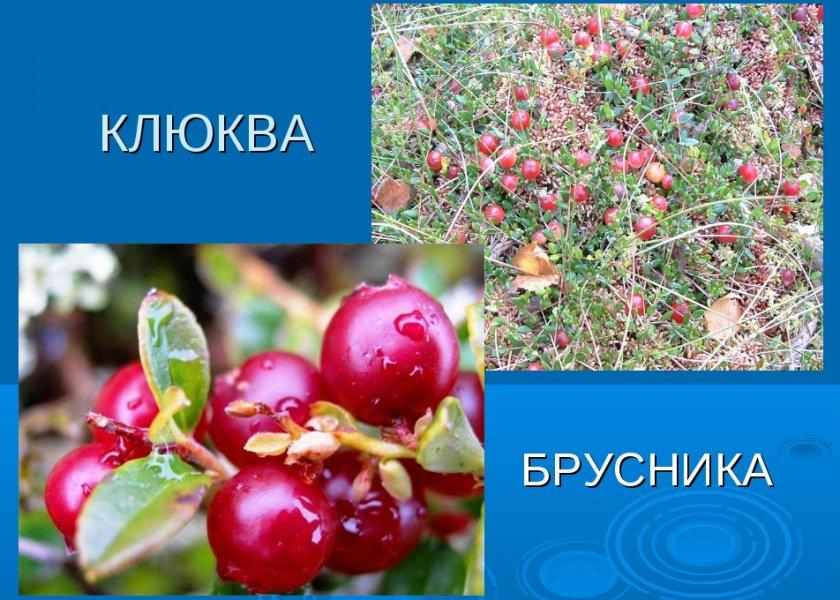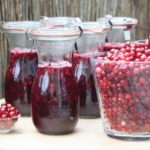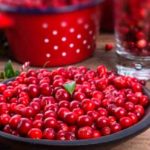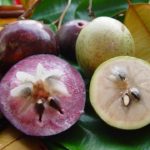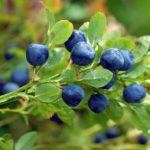Lingonberries and cranberries are similar plants that have tasty and healthy berries. At first glance it may seem that these are exactly the same cultures, but in reality this is not the case. They have differences in leaves and fruits. There is also a difference in the taste and chemical composition of lingonberries and cranberries.
What it is
Both plants belong to the common Heather family. They are small perennial shrubs that are distinguished by oval leaves and round red berries.
Description of lingonberries
This is a creeping plant that has frequent leathery leaves of an elliptical or obovate shape with curling edges. They reach 0.5-3 centimeters in length. On top, lingonberry leaves have a dark green color and a shiny surface, and on the bottom they are light green and matte.
The shoots of the crop reach a length of 1 meter, but usually they grow to 8-15 centimeters. Lingonberry has bisexual flowers with 4 lobes. They can be white or light pink in color.
The plant is characterized by spherical fruits with red shiny skin. Their diameter is approximately 0.8 centimeters. Lingonberries are characterized by a sweet and sour taste with a slight bitterness. Fruit ripening occurs in August or September. After frost they take on a watery texture.
Description of cranberries
This plant is a creeping shrub with flexible rooting stems measuring 15-30 centimeters. The culture has small alternate leaves 1.5 centimeters long and up to 0.6 millimeters wide. They may have an ovoid or elongated shape. The leaves are dark green on top and ashen underneath. During the flowering period, pink or pale purple flowers with 4 or 5 petals appear on the bushes.
Cranberries bloom in May and June. After which red spherical or ovoid berries appear on the bushes. They reach about 1.5 centimeters in diameter. The fruits have a sour taste.
Main differences
Visually, the plants are similar only in the color of the fruits. However, their differences are much greater. They relate to the size and shape of leaves, bushes, and berries.
Where does it grow
Lingonberries are predominantly found in the tundra, Scandinavian countries and subarctic climates.This plant cannot be seen near megacities. Culture chooses only environmentally friendly places.
Cranberries are often called “bear mountain.” Before hibernating, bears eat a lot of berries. In this way they replenish their reserves of microelements for the winter. This plant is found in different countries. It is found in the Carpathians, Crimea, and Volga region.
Size and color
The berries differ significantly in appearance. Lingonberry has burgundy-red fruits of muted shades. Cranberries resemble pomegranates in appearance. If you place the fruits in your palm, it will not be difficult to see the difference. Lingonberries are smaller in size.
So, the key visual differences include the following:
- Cranberries have a slightly elongated shape, and lingonberries are round.
- Cranberries are characterized by a heterogeneous color - they may have spots, stripes, and specks. Lingonberries resemble small scarlet balls.
- Cranberries are larger in size. In diameter it reaches 1-1.5 centimeters. The size of lingonberries does not exceed 0.8 millimeters.
- Lingonberry has rather large and fleshy foliage. Cranberries have small and thin leaves.
Taste
Both types of berries have a sour taste, which is due to their composition and chemical content. However, they can be quite distinguished.
The taste of lingonberries is associated with the presence of the following components:
- sugars – make up no more than 10% of the mass;
- organic acids – make up a maximum of 2%.
Due to the increased sugar content, lingonberries have a sweeter taste. When fruits are frozen at the ripening stage, they become sweeter.
The taste of cranberries is affected by the following:
- sugar – their content does not exceed 6%;
- organic acids – their amount is a maximum of 4%.
Due to their higher acid content and lower proportion of sugars, cranberries have a more sour and tart taste.
Compound
Cranberries are a juicy berry that is 87% water. 100 grams of product contain 12 grams of carbohydrates, 4.6 grams of fiber and less than 1 gram of fat and protein. As for vitamins, cranberries contain the following:
- retinol;
- carotene;
- B vitamins;
- tocopherol;
- ascorbic acid;
- phylloquinone.
Of the minerals, the product contains calcium, iron, magnesium, potassium. It also contains copper, sodium and zinc. Of the organic acids in cranberries, citric acid predominates. That is why its fruits have a very sour taste.
Lingonberries differ in composition in that they contain fewer carbohydrates. 100 grams of product contain 8.2 grams of these substances. Lingonberries also differ in the amount of vitamins. It also contains retinol, tocopherol, vitamin C and carotene. However, it lacks vitamin B9 and K. Lingonberries have the same mineral composition as cranberries. However, it lacks copper and zinc.
Benefits and harms
Both types of berries provide great health benefits. With regular consumption of cranberries, you can achieve the following results:
- reduce blood pressure in case of hypertension;
- strengthen vascular walls;
- strengthen the immune system;
- normalize the functioning of the digestive system in case of constipation, flatulence, pathologies with reduced acidity;
- stimulate metabolic processes and activate the breakdown of carbohydrates - this helps reduce weight.
Whole lingonberries can be used in folk medicine.Unlike cranberries, not only the fruits, but also the shoots and foliage have medicinal properties. Due to its high magnesium content, the product helps support heart function.
With regular consumption of lingonberries, you can get the following results:
- Prevent the development of viral infections.
- Cope with viruses and bacteria.
- Eliminate inflammatory processes in the genitourinary system, get rid of chronic cystitis and pyelonephritis.
- Facilitate the treatment of sinusitis, pharyngitis, bronchitis.
- Improve the condition of joint damage, arthritis, gout.
Lingonberries are prohibited from being used in the following cases:
- hypotension;
- pathologies of the digestive system;
- impaired kidney function - in this case, lingonberries can only be used with the permission of a doctor.
The main contraindication to the use of cranberries is gastric and duodenal ulcers. For other abnormalities in the functioning of the digestive organs, berries can be used.
It is important to consider that cranberries are prohibited from being used in the following cases:
- active development of caries, ulcerative defects in the oral cavity, increased sensitivity of tooth enamel;
- exacerbation of gastritis;
- the first 4 months of breastfeeding.
Bottom line
Despite belonging to the same family, cranberries and lingonberries have a number of differences. The difference affects the appearance of shrubs and fruits. The size and color of the berries, their chemical composition and effect on the human body also differ.


